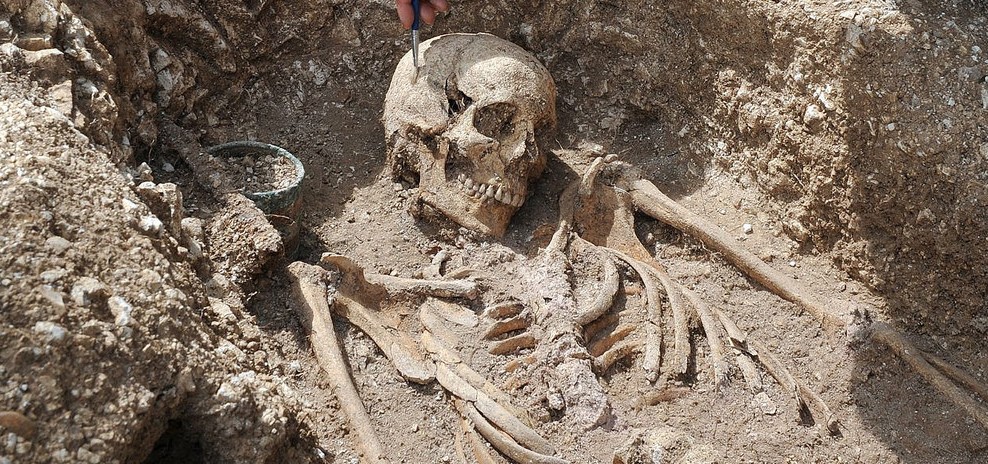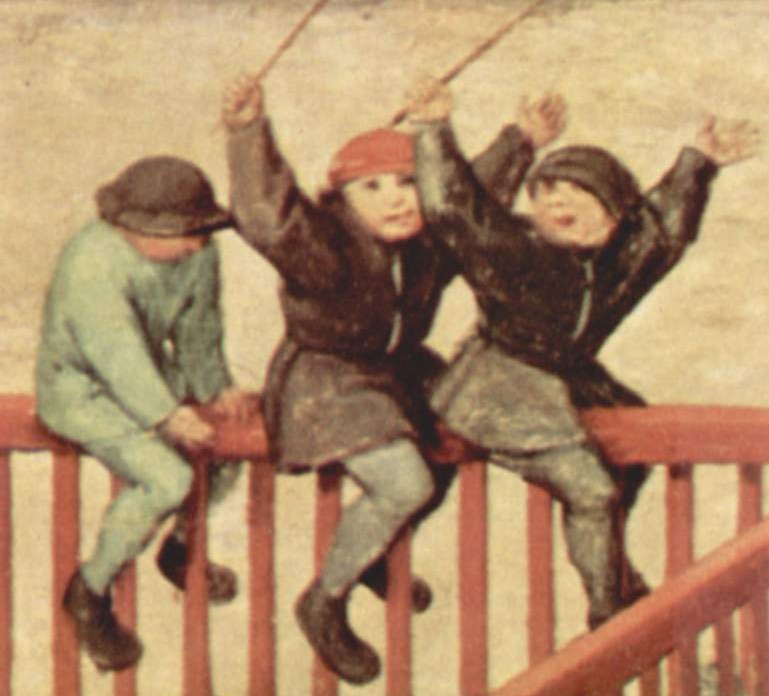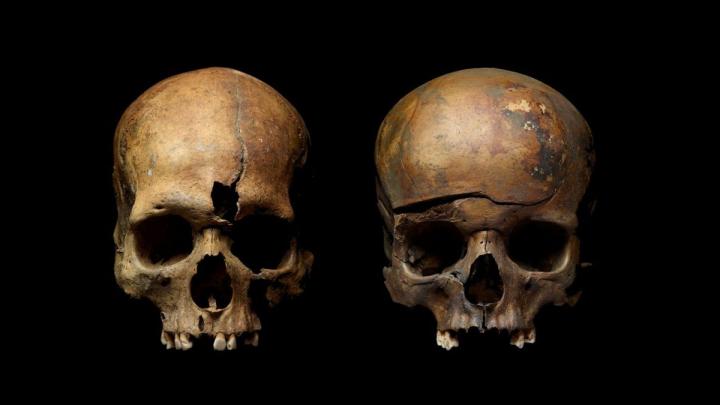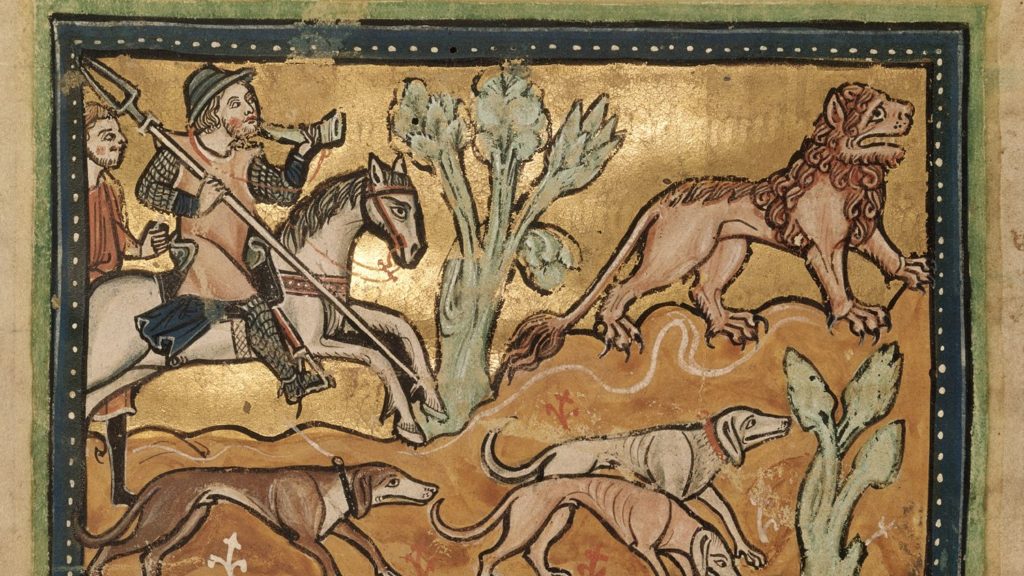Why were people in the Early Middle Ages reopening graves?
In early medieval Europe, the dead and their possessions did not stop being important after the burial – researchers have discovered a widespread tradition of reopening graves.
Forensic archaeologist gives new clues to 800-year old bones discovered at Westminster Palace
Medieval bone fragments discovered beneath the Palace of Westminster in 1992 have finally given up their astonishing story, thanks to a University of Bradford lecturer.
What can ‘skeletal trauma’ tell us about the people of medieval Cambridge
University of Cambridge researchers examined the remains of 314 individuals dating from the 10th to the 14th century and collected evidence of “skeletal trauma”
From The Hobbit to Early Christian Burial in Scotland, with Adrián Maldonado
Kate Buchanan is joined by Adrián Maldonado to discuss Adrián’s journey to studying medieval Scottish history and his work on early Christian burial in Scotland and his current work with the Glenmorangie Research Project.
Viking Woman’s Grave discovered in Norway
She was placed in a burial chamber and took several hundred miniature beads with her on her last journey. Who was the woman who was buried by Valsøyfjord over 1000 years ago?
The study of Byzantine skeletons, with Chryssa Bourbou
A conversation with Chryssa Bourbou on what we learn from health and society in Byzantium from the study of skeletal remains.
Gjellestad was a major Viking burial ground, new research reveals
The ground-penetrating radar data showed 13 burial mounds once existed at Gjellestad, some over 30 metres wide.
The King and his brother in a shrine – a story of textiles
King Canute’s shrine no longer holds the precious silk textiles placed in it at his enshrinement. Instead it is likely that the textiles from his brother’s shrine at some point have been moved to King Canute’s shrine.
Understanding Anglo-Saxon burial practice patterns through radiocarbon dating: a case study from southern England
This paper will present preliminary data from a multifaceted approach to dating three Anglo-Saxon cemeteries in southern England, with mixed burial practices to reveal chronological patterns
6th century warlord discovered in England
Archaeologists have uncovered the remains of a high-status warlord who lived in the sixth century. They believe the discovery will have important implications for our understanding of society in post-Roman Britain.
Black Death Mass Grave discovered in England
A mass burial of bodies, known to be victims of the Black Death, has been discovered at the site of a 14th-century monastery hospital at Thornton Abbey, in eastern England.
Microstructural History: What Metallurgy Can Tell Us about Early Medieval Burial Practices
Metallic microstructures inside weapon blades from early medieval cemeteries preserve rich, untapped histories of interactions between people and these objects.
Grave Bj 581: the Viking Warrior that was a woman
Is the standing interpretation of the grave as that of a high-status warrior still valid?
Thousand-year-old cemetery uncovered in Uzbekistan
Radiocarbon dating (ca 1000–1100 AD) placed this cemetery in the High Medieval period and was likely associated with the nearby tepa.
Sixth-century skeleton and grave goods discovered in Canterbury
Archaeologists have discovered the remains of an early medieval woman, buried with lavish jewels on the campus of Canterbury Christ Church University in southern England.
Children and child burial in medieval England
This thesis presents an investigation into children in medieval England through burial, the most archaeologically-visible evidence for the treatment and conceptualisation of children in life.
Archaeologists discover 500 year-old burials at the Tower of London
An archaeological excavation undertaken within the walls of the Tower of London, just outside the main entrance of the Tower’s historic Chapel of St Peter ad Vincula, has uncovered the remains of two people an adult female and a young child, who were buried about 500 years ago.
New project to examine medieval burials in Scotland
The Tarbat Medieval Burials Project has been launched in northern Scotland, which will examine a set of burials from the 15th century.
Black Death burials reveal the diversity of London’s medieval population
New research on people buried in London during the Black Death suggests that the city’s population was more diverse than currently believed, including the presence of people with African heritage.
Memories of migration? The ‘Anglo-Saxon’ burial costume of the fifth century AD
It is often claimed that the mortuary traditions that appeared in lowland Britain in the fifth century AD are an expression of new forms of ethnic identity, based on the putative memorialisation of a ‘Germanic’ heritage.
Researchers reveal new insights into mass graves from the Mongol invasion of Russia
In the winter of 1238 a Mongol army sacked the Russian city of Yaroslavl, part of its conquest of the region. Researchers have now been able to examine a mass grave from that attack, and used genetic research to identity three members from the same family.
People in early medieval Croatia may have deliberately altered their skulls, archaeologists find
People in Croatia during the fifth to sixth centuries may have deliberately made cranial modifications to indicate their cultural affiliations, according to a study published this month in PLOS ONE.
New insights into the buried warrior at Prague Castle
Used as a propaganda tool by the Nazis and Soviets during the Second World War and Cold War, the remains of a 10th century male, unearthed beneath Prague Castle in 1928, have been the subject of continued debate and archaeological manipulation.
Two Viking Age ship burials discovered in Sweden
A unique find of two boat burials from the Viking Age have been discovered in Sweden. One of the two graves was intact with remains of a man, a horse and a dog.
Dead Dogs are so 9th Century
My research looks at specific acts of ritualised mortuary violence enacted on objects, animals, and people by Vikings in the British Isles, and aims to develop a new interpretative framework with which to consider them.
























